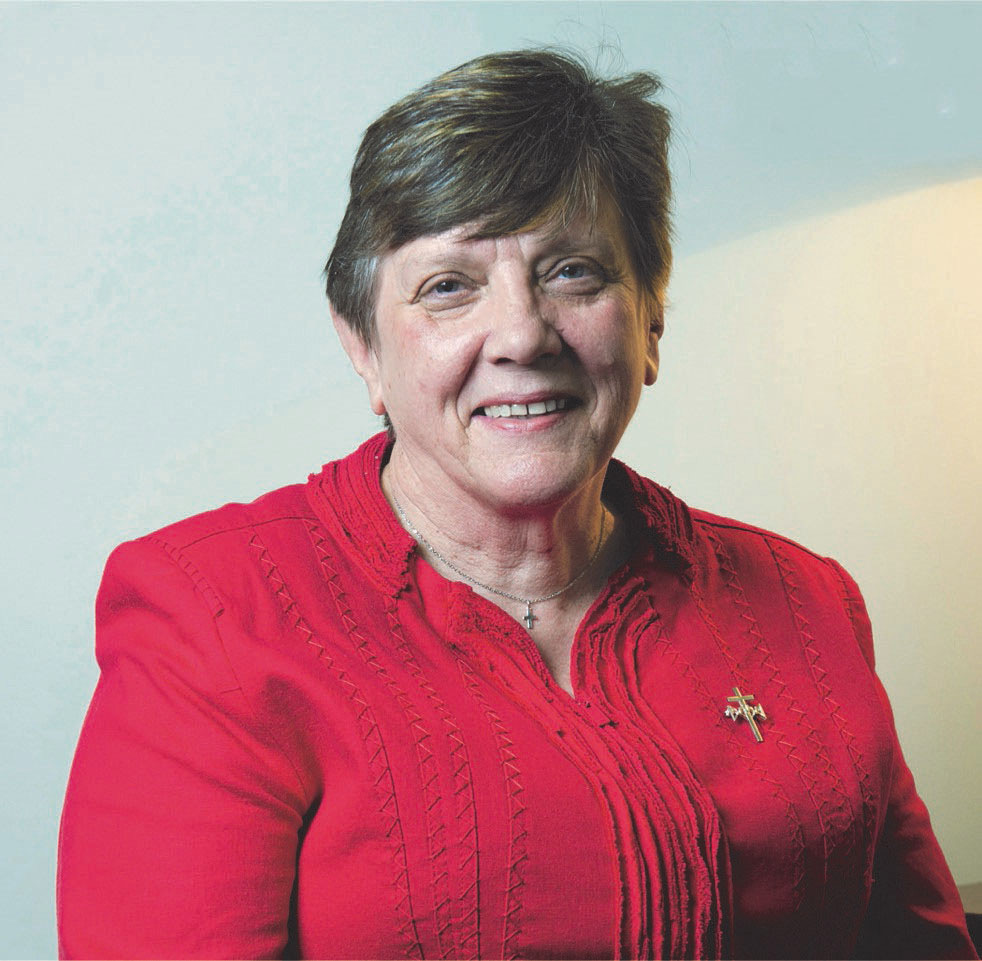Ritual provides space for the sacred to break through and transform

Sister Monica Cavanagh rsj, President, Catholic Religious Australia.
By Sister Monica Cavanagh rsj
President, Catholic Religious Australia
November is a time when we pause and take time to remember our loved ones who have gone before us into the joy of eternal life. Embraced by the living God and encircled by the communion of saints, our lives remain connected forever.
In particular we cherish the memory of those members of our communities who have died. We draw courage and wisdom from them, for their spirit lives on in us.
In some countries of the world the feast of All Saints and All Souls is a special time when families make visits to the cemetery as a way of connecting and sharing stories of their beloved ones. Here in such sacred spaces, one is called to ponder that death is but a moment in the great mystery of life.
Recently I was in Peru where the Sisters shared a special time of celebration and remembering the two women Religious killed during the period of the ‘Shining Path’ – Sr Maria Agustina ‘Aguchita’ Rivas Lopez, Good Shepherd Sister and Sr Irene McCormick rsj.
The celebration took place in Lima at ‘The Eye that Cries’ Labyrinth composed of thousands of small stones representing the victims of this violent time within the history of Peru.
Powerful experience
Walking this labyrinth is a powerful experience as one is touched by the violence, the courage and the loss of life. Walking amidst the stones as you read the names, you can identify whole families whose lives were lost at this time. For many this is the only place of remembrance with which they can connect. Standing here one recalls the many women and men religious across our world who have given their lives because they loved deeply.
This year also marked the centenary of Armistice Day when silence brought an end World War I on 11 November 1918. Around the nations this day was remembered by the wearing of a red poppy, a minute of silence and rituals which honoured the fallen and comforted those whose lives have been inter-twined forever through such a tragedy. Such moments hold memories of loss, bravery and self-sacrifice and of being united forever in the hope of the resurrection.
In October, the church along with the people of El Salvador celebrated the canonisation of Oscar Romero – a man of justice, courage and faith who ultimately laid down his life for his people. His life has left a deep imprint on the hearts of thousands of people, as a risk-taker who faced his fears, took action and paid a price for it.
Oscar reminds us that ‘we are prophets of a future not our own’ which is a very apt message for us as Religious women and men today. He challenges us to reflect on the heart of our call: ‘God is not satisfied with appearance. God wants the garment of justice. God wants Christians dressed in love’.
Significant moments
The National Apology to the victims and survivors of institutional child abuse on 22 October delivered by The Prime Minister, the Hon Scott Morrison MP, was another moving moment in the life of the Australian nation. Hearts joined together as this pain and suffering was acknowledged. Many Catholic dioceses, religious congregations, communities, schools, ministries and agencies held local events to mark the National Apology.
On Sunday 2 December 2018, the first Sunday of Advent, Catholic Religious Australia is holding a National Day of Sorrow and Promise. It is an opportunity to come together nationally with a united voice.
All congregations are invited to hold a Liturgy of Sorrow and Promise so that all religious are in solidarity with each other and the wider community in sorrow but also with a promise for the future. This ritual offers an opportunity for Catholic Religious across the country to recognise survivors and secondary victims and to honour those who spoke their stories to break the silence and to make a commitment to work together for the future.
This is an opportunity to raise the strong, prophetic voice of the religious across Australia, together, in a powerful expression of sadness, humility, hope and promise. I encourage all Religious Congregations to be participants in this significant liturgy wherever you find yourself.
Each of these events reminds us of the significance of ritual in our lives. Even in a world becoming seemingly more secularised, key moments in a local community or a nation are being ritualised by the placing of flowers, the lighting of candles and the gathering of peoples. The act of ritual is a common thread that has linked humanity through the ages.
Sense of belonging
These bonds of ritual create a sense of belonging and meaning that have the power to heal and transform, to celebrate and acknowledge important moments in the life of a community or an individual. Religious women and men know the power of ritual as we celebrate professions, jubilees, feast days and significant moments in our story as well as funeral liturgies where we farewell our beloved members.
Through song, dance, tears and laughter, anointing, blessing and feasting, we honour these sacred times. We experience ritual which builds the bonds of community among us.
Let us continue to be people of ritual for such moments, not only to give a sense of meaning and connectedness, but because they provide those spaces where the sacred has the power to break through and be transformative.
Source: Catholic Religious Australia.


